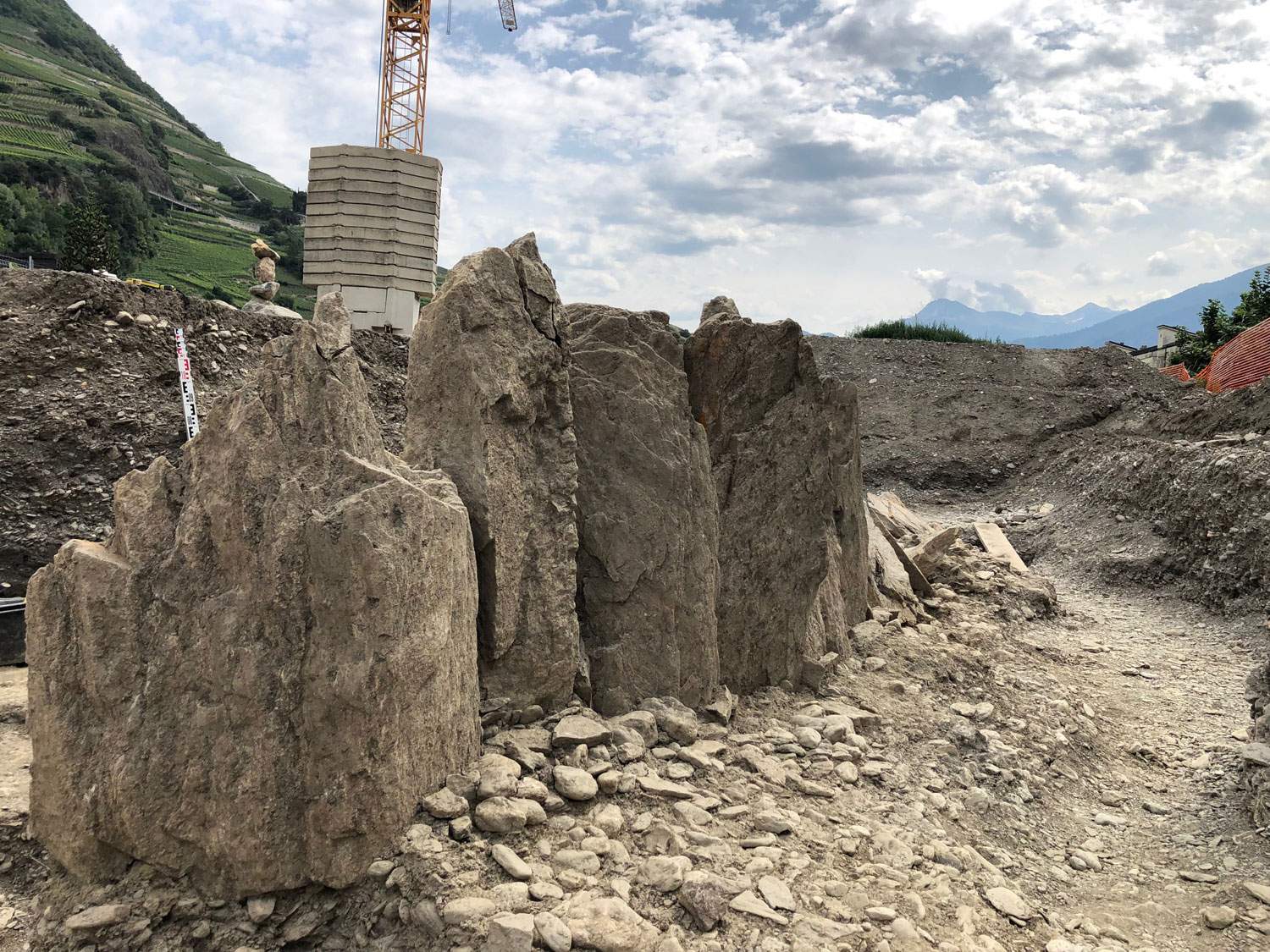A team of archaeologists working for theArchaeological Office of the Canton of Valais (Switzerland) discovered, during a preventive excavation for a construction in the commune of Saint-Léonard, in the locality of Les Fougains, an alignment of 13 medium-sized menhirs (they are just over a meter high), which may date back to the Bronze Age or Neolithic (carbon-14 dating is currently underway to get more precise information). Menhirs are large stones that were hoisted upright by ancient peoples who lived during the Neolithic: they could be erected individually or in groups and were used for religious purposes.
This is an exceptional discovery for the area because the last similar discovery in Canton Valais was in 1964, when a site, called Le Petit-Chasseur, was discovered in the cantonal capital Sion, where three dolmens were found. The municipality of Saint-Léonard meanwhile lets it know that once the study phase is over, a discussion will be launched on how to enhance the find.
“There are many Neolithic traces in the region,” archaeologist François Mariéthoz of the Canton Valais Archaeological Office told Le Figaro newspaper. “Settlement centers, tombs, pottery ... from the Middle Neolithic to the Late Neolithic, there has been a lot of activity in this region of Switzerland.” Saint-Léonard falls within the territory pertaining to what archaeologists identify as the Cortaillod Neolithic culture, which affected central and western Switzerland and upper Savoy between the fifth and fourth millennia B.C.E., and as a result, Mariéthoz says, the menhir find is “not a real surprise,” despite being “extraordinary and very rare.”
The menhirs at Saint-Léonard are found arranged in a row along a straight line, and scholars will now also have to try to clarify the purpose and meaning of this alignment, which Mariéthoz says “could have links to the burials discovered in the surrounding area. It could have a social or religious role, and serve as a marker between imaginary or real territories. For example, it could represent the border between the dead and the living, or between land and water.” More precise dating might help clarify ideas.
 |
| Switzerland, alignment of 13 menhirs discovered in Canton Valais: Extraordinary and rare |
Warning: the translation into English of the original Italian article was created using automatic tools. We undertake to review all articles, but we do not guarantee the total absence of inaccuracies in the translation due to the program. You can find the original by clicking on the ITA button. If you find any mistake,please contact us.